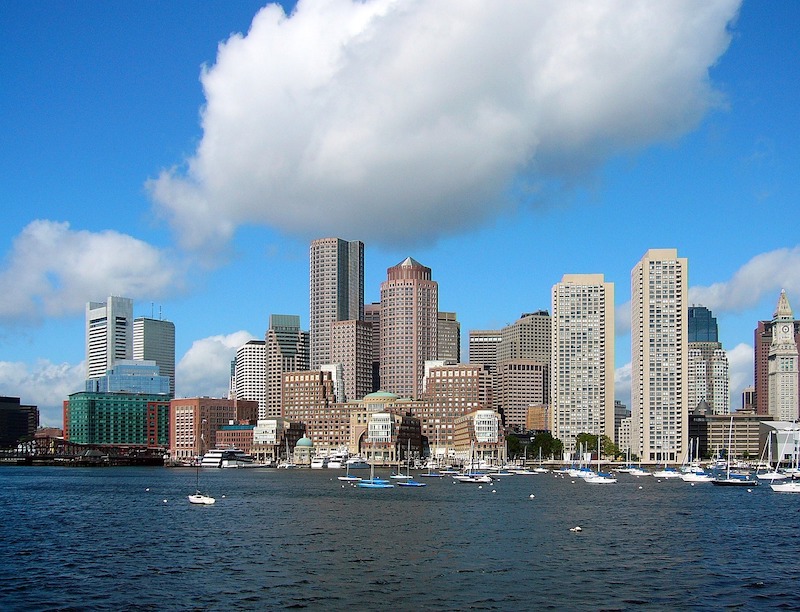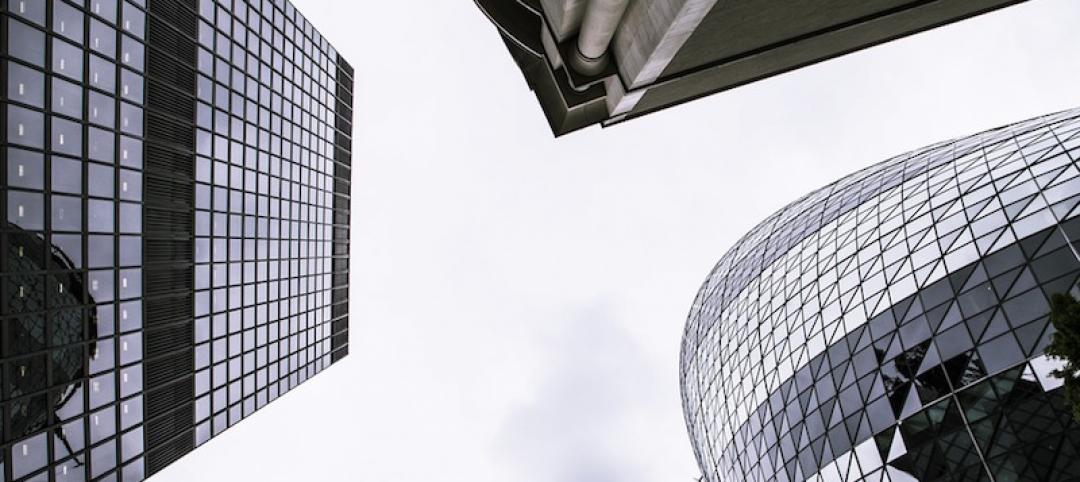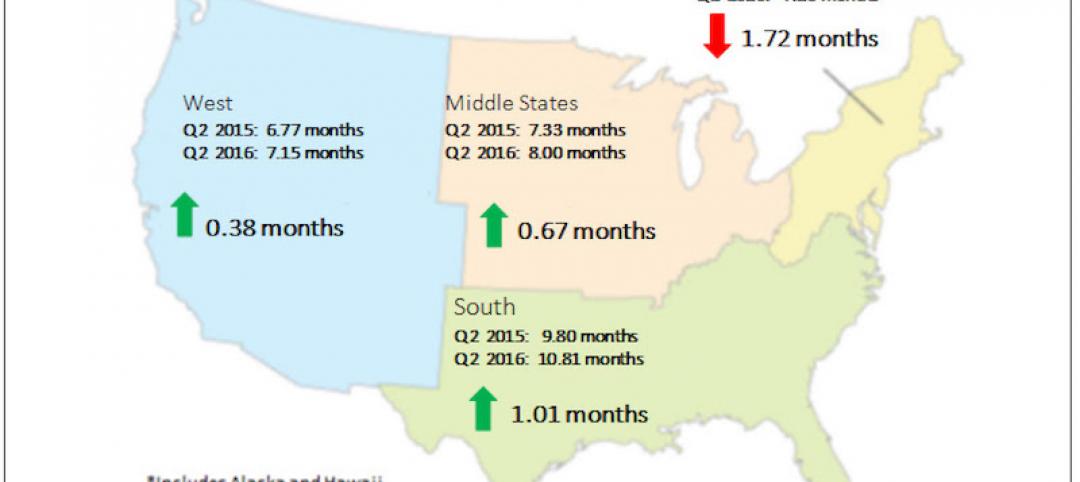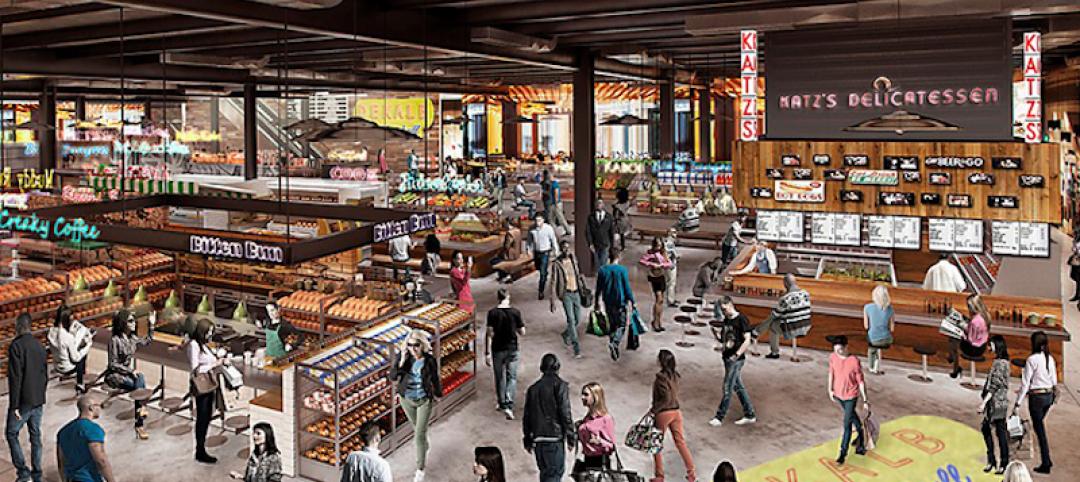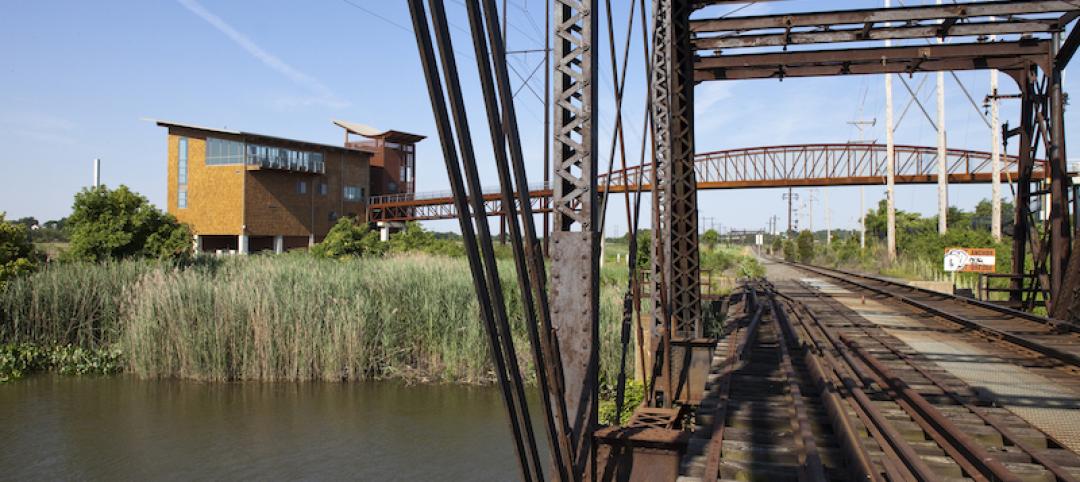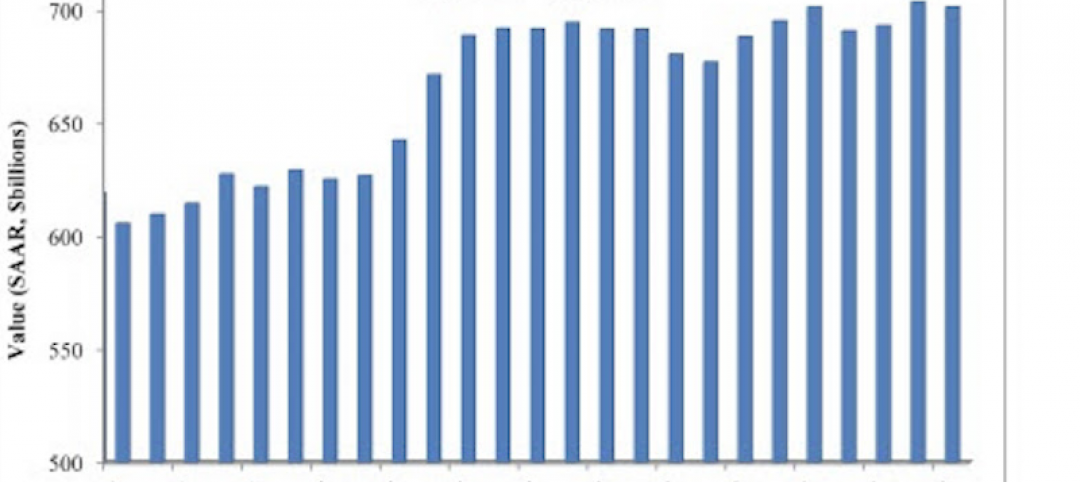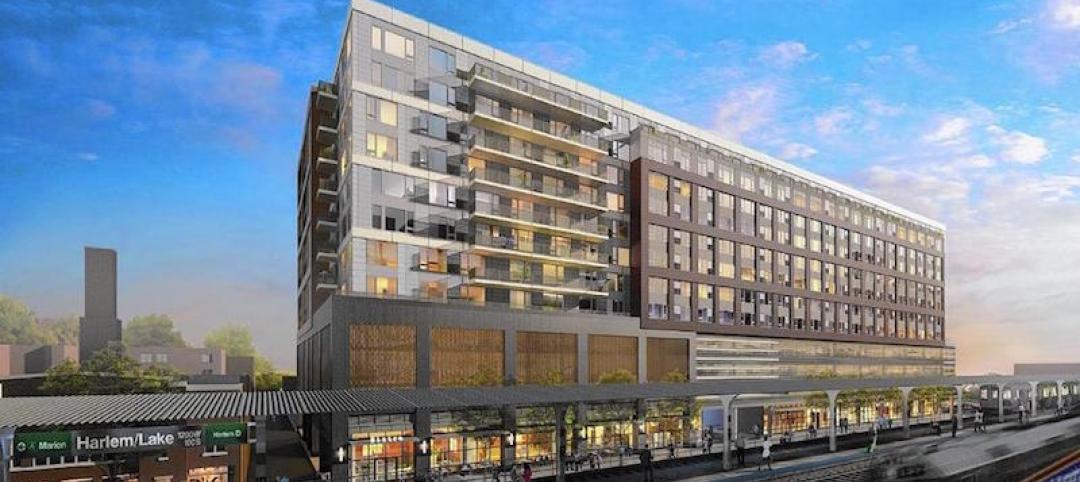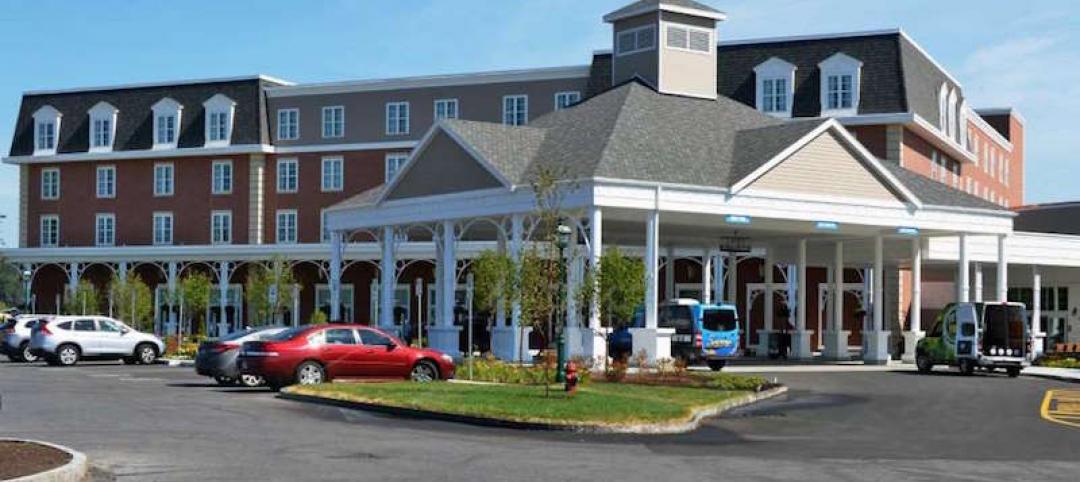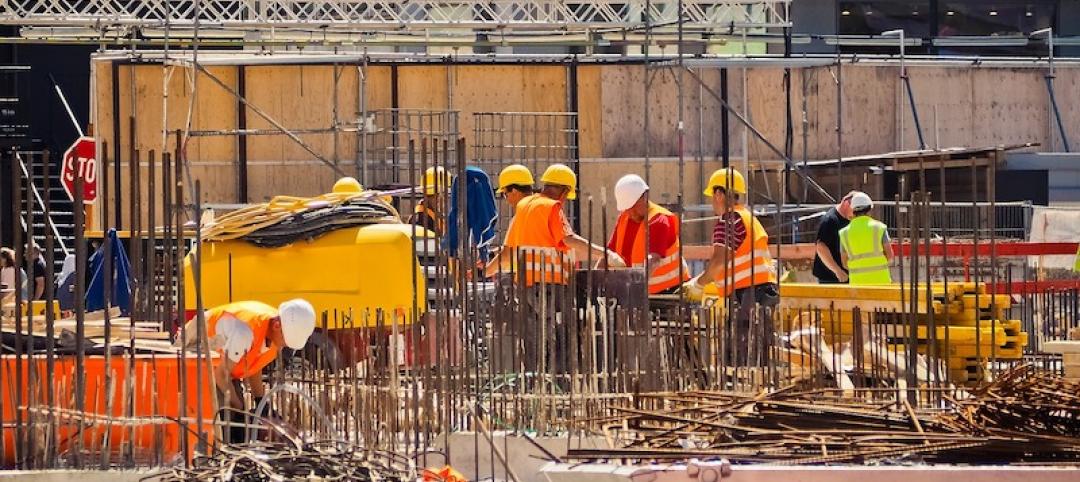The U.S. Green Building Council (USGBC) released its annual list of the Top 10 States for LEED green building with Massachusetts leading the country in 2020 with the most certified square feet per capita. Across the top states, more than 60% of certifications were office, healthcare, higher education and K-12 projects. This year, USGBC also released a ranking of states with the most LEED professionals with California taking the top spot. Collectively, the 2020 rankings represent 1,171 certified LEED buildings and spaces, and more than 100,000 green building workers.
“If we are to rebuild an economy that supports our health and our planet, we must lead with changing the way we design and build,” said Mahesh Ramanujam, president and CEO of USGBC. “Last year was a stark reminder that the quality of our buildings impacts the quality of our life. Looking ahead, people want to trust that the spaces they occupy are good for them and their communities, and LEED has always been a tool to support those goals. Now is the time to ensure that every building is LEED certified as that is the only way we are accomplishing our goals of access to healthy, green buildings, homes and spaces.”
While offices, education and healthcare projects accounted for a majority of certifications, warehouses, distribution centers, multifamily and retail projects represented almost 20%. Also, almost half of all projects were certified Gold, indicating a commitment to a high level of certification.
The Top 10 States for LEED green building is based on gross square feet of certified space per person using 2010 U.S. Census data and includes commercial and institutional projects certified in 2020. The full top 10 state rankings are as follows:
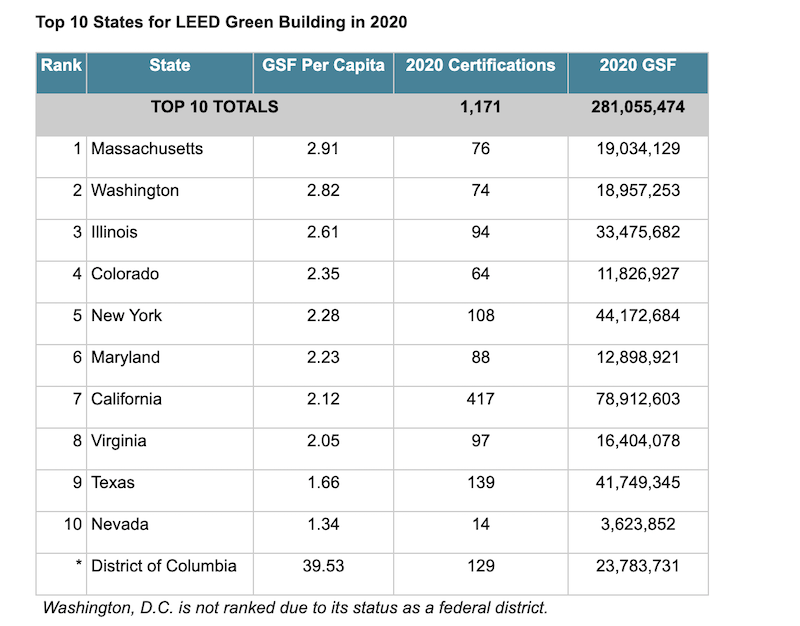
The global green building community is continually improving LEED to ensure it helps buildings, communities and cities to be more sustainable, healthy, resilient and equitable. More than two-thirds of LEED credits support human health, as the rating system addresses ventilation and filtration, daylighting, low-emitting materials, access to outdoor spaces, acoustics and other key factors. In response to the COVID-19 pandemic, USGBC also introduced Safety First guidance to address operational challenges and assist with each state’s re-entry planning.
LEED’s foundation, however, is in its commitment to help the building sector reduce its contribution to climate change. Certification communicates progress in support of climate and ESG commitments and the goal is to get more buildings on a path to certify. Using Arc to track performance, USGBC is tracking nearly 56 million metrics tons of GHG emissions associated with energy and transportation, and more than 167 billion gallons of water. The data show that LEED projects deliver significant reductions in emissions and improvements in occupant experience - and the benefits increase with higher levels of LEED certification. The latest version of the rating system, LEED v4.1, raises the bar on green building performance, defining the latest sustainability standards while enabling project teams to continue to track progress beyond certification.
“If we want to make a positive impact in our communities, we must transform the building sector, and focus on what the data is telling us,” added Ramanujam. “By putting data at the center of LEED we’re helping teams better understand building performance, find ways to improve and ultimately find a path to net zero.”
Since 2018, more than 25 projects globally have certified LEED Zero, which recognizes net zero performance in buildings and spaces. LEED’s third-party certification is the industry’s dominant green building standard and LEED Zero expands on that work verifying achievements in net zero carbon, energy, water and waste. It focuses on a higher level of green building performance.
Transforming the building sector to be more sustainable requires a skilled and knowledgeable workforce. This workforce is contributing to the development and advocacy of LEED and is being quickly embraced by the next generation workforce and decision makers. USGBC has been committed to cultivating and supporting green building professionals through its credentialing and certificate programs. This year, USGBC is also releasing an additional Top 10 list recognizing states with the most LEED green building professionals. The full list is as follows:
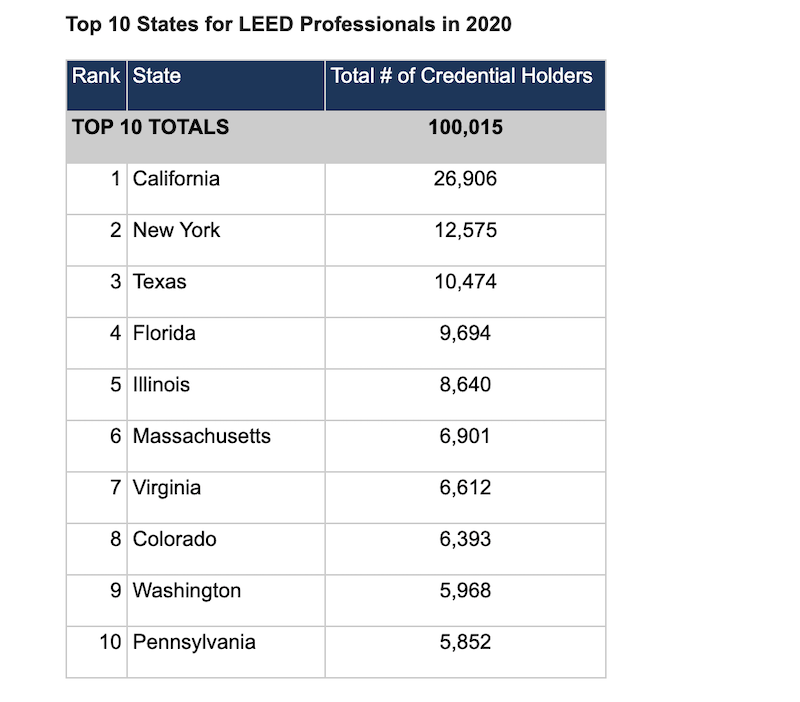
More information about LEED certification and green building is available at usgbc.org.
Related Stories
Market Data | Sep 22, 2016
Architecture Billings Index slips, overall outlook remains positive
Business conditions are slumping in the Northeast.
Market Data | Sep 20, 2016
Backlog skyrockets for largest firms during second quarter, but falls to 8.5 months overall
While a handful of commercial construction segments continue to be associated with expanding volumes, for the most part, the average contractor is no longer getting busier, says ABC Chief Economist Anirban Basu.
Designers | Sep 13, 2016
5 trends propelling a new era of food halls
Food halls have not only become an economical solution for restauranteurs and chefs experiencing skyrocketing retail prices and rents in large cities, but they also tap into our increased interest in gourmet locally sourced food, writes Gensler's Toshi Kasai.
Building Team | Sep 6, 2016
Letting your resource take center stage: A guide to thoughtful site selection for interpretive centers
Thoughtful site selection is never about one factor, but rather a confluence of several components that ultimately present trade-offs for the owner.
Market Data | Sep 2, 2016
Nonresidential spending inches lower in July while June data is upwardly revised to eight-year record
Nonresidential construction spending has been suppressed over the last year or so with the primary factor being the lack of momentum in public spending.
Industry Research | Sep 1, 2016
CannonDesign releases infographic to better help universities obtain more R&D funding
CannonDesign releases infographic to better help universities obtain more R&D funding.
Industry Research | Aug 25, 2016
Building bonds: The role of 'trusted advisor' is earned not acquired
A trusted advisor acts as a guiding partner over the full course of a professional relationship.
Multifamily Housing | Aug 17, 2016
A new research platform launches for a data-deprived multifamily sector
The list of leading developers, owners, and property managers that are funding the NMHC Research Foundation speaks to the information gap it hopes to fill.
Hotel Facilities | Aug 17, 2016
Hotel construction continues to flourish in major cities
But concerns about overbuilding persist.
Market Data | Aug 16, 2016
Leading economists predict construction industry growth through 2017
The Chief Economists for ABC, AIA, and NAHB all see the construction industry continuing to expand over the next year and a half.


